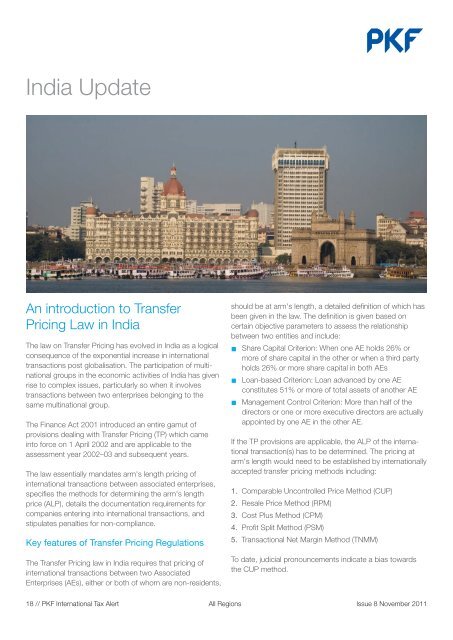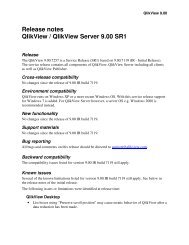Download PDF - Wipfli
Download PDF - Wipfli
Download PDF - Wipfli
You also want an ePaper? Increase the reach of your titles
YUMPU automatically turns print PDFs into web optimized ePapers that Google loves.
India Update<br />
An introduction to Transfer<br />
Pricing Law in India<br />
The law on Transfer Pricing has evolved in India as a logical<br />
consequence of the exponential increase in international<br />
transactions post globalisation. The participation of multinational<br />
groups in the economic activities of India has given<br />
rise to complex issues, particularly so when it involves<br />
transactions between two enterprises belonging to the<br />
same multinational group.<br />
The Finance Act 2001 introduced an entire gamut of<br />
provisions dealing with Transfer Pricing (TP) which came<br />
into force on 1 April 2002 and are applicable to the<br />
assessment year 2002–03 and subsequent years.<br />
The law essentially mandates arm's length pricing of<br />
international transactions between associated enterprises,<br />
specifies the methods for determining the arm's length<br />
price (ALP), details the documentation requirements for<br />
companies entering into international transactions, and<br />
stipulates penalties for non-compliance.<br />
Key features of Transfer Pricing Regulations<br />
The Transfer Pricing law in India requires that pricing of<br />
international transactions between two Associated<br />
Enterprises (AEs), either or both of whom are non-residents,<br />
should be at arm's length, a detailed definition of which has<br />
been given in the law. The definition is given based on<br />
certain objective parameters to assess the relationship<br />
between two entities and include:<br />
■ Share Capital Criterion: When one AE holds 26% or<br />
more of share capital in the other or when a third party<br />
holds 26% or more share capital in both AEs<br />
■ Loan-based Criterion: Loan advanced by one AE<br />
constitutes 51% or more of total assets of another AE<br />
■ Management Control Criterion: More than half of the<br />
directors or one or more executive directors are actually<br />
appointed by one AE in the other AE.<br />
If the TP provisions are applicable, the ALP of the international<br />
transaction(s) has to be determined. The pricing at<br />
arm's length would need to be established by internationally<br />
accepted transfer pricing methods including:<br />
1. Comparable Uncontrolled Price Method (CUP)<br />
2. Resale Price Method (RPM)<br />
3. Cost Plus Method (CPM)<br />
4. Profit Split Method (PSM)<br />
5. Transactional Net Margin Method (TNMM)<br />
To date, judicial pronouncements indicate a bias towards<br />
the CUP method.<br />
18 // PKF International Tax Alert All Regions<br />
Issue 8 November 2011
















